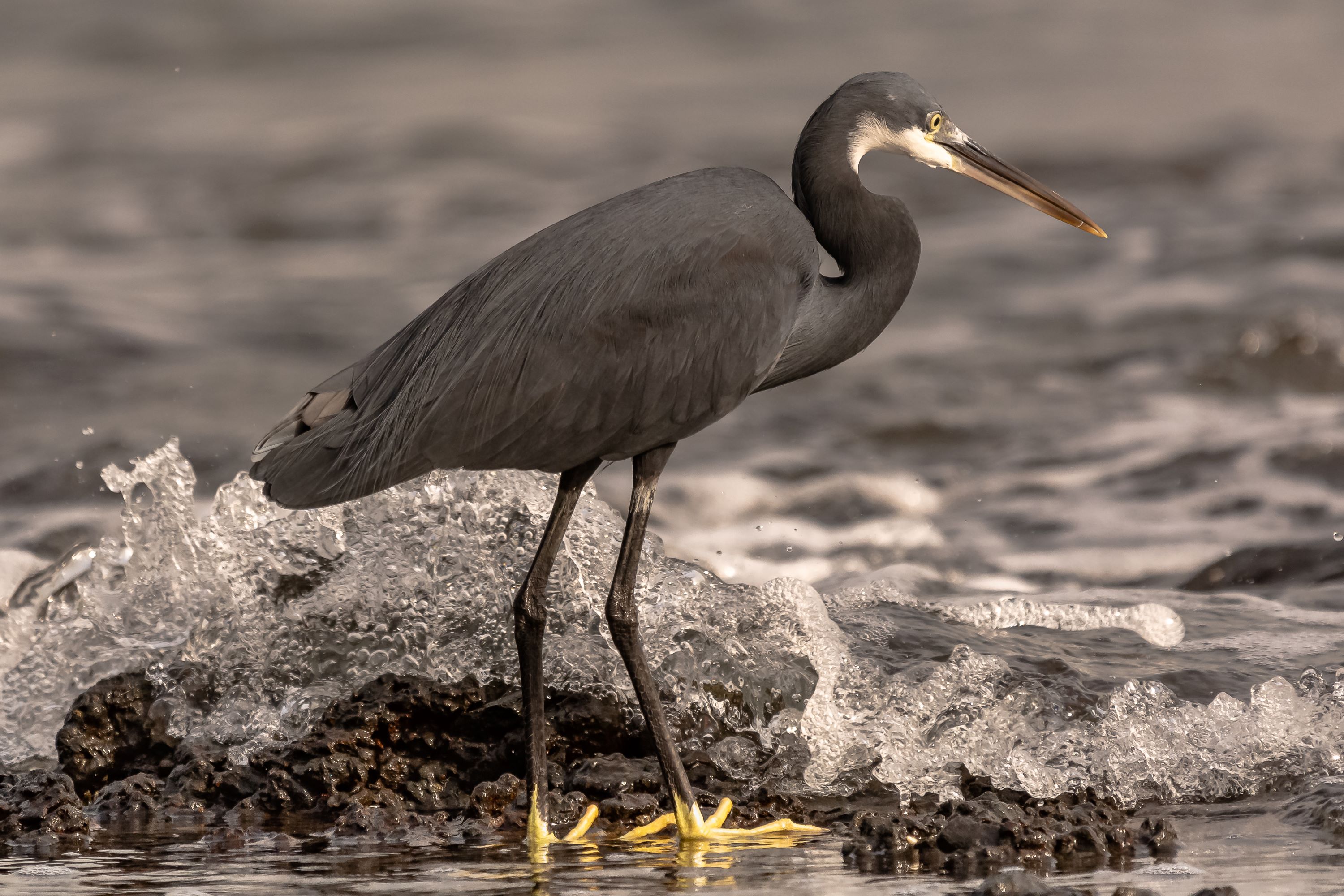
Western Reef Heron: The Coastal Specialist
Introduction to the Western Reef Heron
The Western Reef Heron, Egretta gularis, is a distinctive and adaptable bird within the heron family, Ardeidae. This species, characterized by its preference for coastal habitats, showcases remarkable versatility in its feeding and living habits.
Physical Description
Typically, the Western Reef Heron stands about 55-65 cm tall. This bird exhibits two color morphs: a slate-gray version and a white version, making its identification intriguing. It has a slender build, a medium-length neck, and a pointed bill suitable for fishing.
Habitat and Distribution
The Western Reef Heron is predominantly found along the coasts of Africa, the Middle East, and South Asia. Its preferred habitats include a variety of coastal environments such as rocky shores, coral reefs, mangroves, and tidal flats. It is particularly adapted to life in saltwater ecosystems.
Behavior and Lifestyle
These herons are known for their solitary feeding habits but can be seen in groups during roosting. They are most active during low tide when their prey is most accessible. Unlike some heron species, the Western Reef Heron shows a strong preference for saltwater environments.
Feeding Habits
Their diet mainly consists of fish and crustaceans. They employ various hunting techniques, including standing still and waiting for prey, walking slowly through shallow waters, or even diving from flight into the water to catch fish.
Breeding and Nesting Habits
Western Reef Herons usually breed in colonies, often with other egret and heron species. They build their nests in trees, shrubs, or even on the ground in mangroves or reed beds, using twigs and branches to create a sturdy platform.
Egg Laying and Incubation
The female lays 2 to 4 pale blue-green eggs. Both parents share in incubation duties, which last approximately 21-25 days. The nests’ locations in dense foliage or over water provide protection from predators.
Chick Rearing and Parental Care
The chicks are altricial and require significant parental care for feeding. Both parents are involved in feeding the chicks, which fledge the nest at about 6 weeks old. However, they may remain dependent on their parents for a short period post-fledging.
Vocalizations and Communication
The Western Reef Heron is relatively quiet but can emit a range of sounds for communication, especially during the breeding season. These include a series of croaks and soft calls, used in interactions with mates or as alarm calls.
Conservation Status
The Western Reef Heron is currently listed as Least Concern by the IUCN. However, it faces threats from habitat destruction, particularly in mangrove ecosystems, and pollution in coastal areas.
Similar Species and Taxonomy
Within the order Pelecaniformes, the Western Reef Heron shares similarities with other species in the Egretta genus, like the Little Egret and the Snowy Egret. However, its coastal habitat preference and color morphs distinguish it from these relatives.
The Western Reef Heron in Utah
The Western Reef Heron is not found in Utah or North America, as its range is limited to coastal regions of Africa, the Middle East, and South Asia. In Utah, bird enthusiasts can observe other heron species in local wetland and coastal areas.
Conclusion
The Western Reef Heron, Egretta gularis, is an exemplary species demonstrating the adaptability and resilience of coastal birds. Its presence along diverse shorelines underscores the ecological importance of marine and coastal environments. Observing the Western Reef Heron in its natural habitat highlights the beauty and complexity of coastal ecosystems, emphasizing the need for continued conservation efforts to protect these vital areas and the wildlife they support.